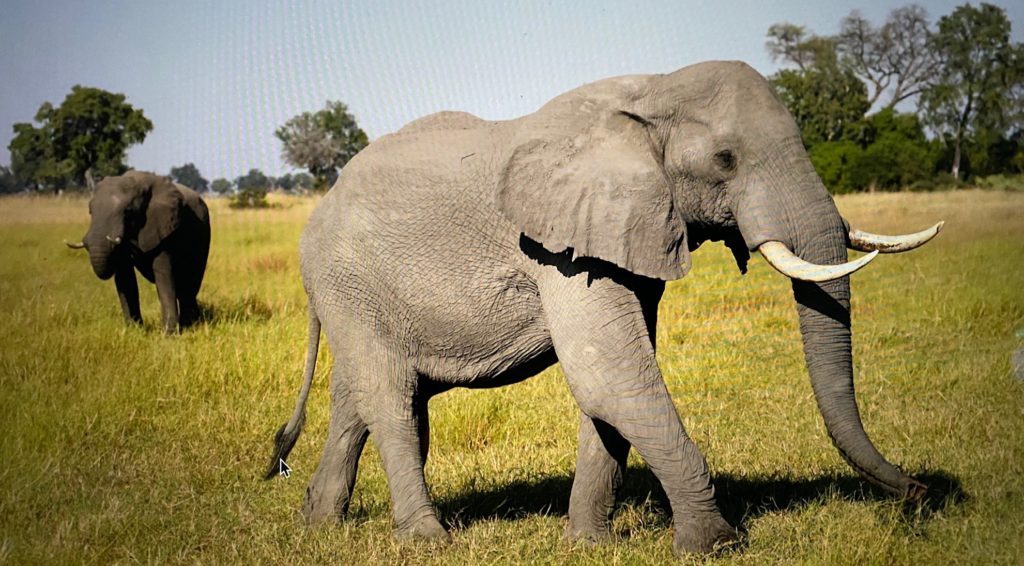Is Climate Change Responsible for Dying Elephants?
Greetings! As you may know from my previous blogs, the elephant is actually related to the manatee. Unfortunately, veterinary scientists now confirm a bacterial toxin is responsible for a huge amount of elephant deaths this year in the Botswana region of Africa. The scientists explain that this toxin “is thriving more because of warming temperatures in the water bodies as a result of climate change.”
The Department of National Parks and Wildlife confirm, “the elephants drank water contaminated by cyanobacteria.” As a result, the “death toll of elephants in this southern African country has subsequently risen to 330.” The research which was conducted “in laboratories in Zimbabwe, South Africa, the US, and Canada, represents a ground-breaking and until now elusive scientific explanation that could also provide answers to the yet to be explained deaths of more elephants in neighboring Zimbabwe.”
The carcasses of elephants were discovered along the intense wildlife range located in the Okavango Delta this past May and June. However, the authorities there were not sure as to the cause of these mass deaths. This left both scientists and conservationists totally puzzled.
This past August, Zimbabwe’s Parks and Wildlife Authority said “more than 20 elephants had also died in its massive Hwange National Park.” However, scientists said “this time there was a clue that the deaths could have been caused by bacterial infection” after ruling out anthrax and poisoning by poachers.
“Cyanobacterial neurotoxins” were detected from tests conducted in the waters of the Okavango Delta in the areas where the hundreds of dead elephants were discovered. Climate scientists on numerous occasions have warned about the “impact of heating up temperatures on earth.” Their warnings also included the warming temperatures could “create environments conductive for the presence of cyanobacteria.” And cyanobacteria favors warmer water temperatures. Because they are both photosynthetic and aquatic, cyanobacteria are often called “blue-green algae“. This name is convenient for talking about organisms in the water that make their own food, but does not reflect any relationship between the cyanobacteria and other organisms called algae.
There have been rising temperatures in sub-Saharan Africa, where countries in that region have been suffering with intense droughts in recent years. Nearly a third of Africa’s elephant population is found in Botswana.
Stay tuned for more of my blogs!
If you see any sick or injured manatees, please call the Florida Fish and Wildlife Conservation Commission at: 1-888-404-FWCC. They are the folks who are responsible for rescuing us in Florida.
Here’s the Save the Manatee Club link to learn more about us manatees …
Here’s a cool link for you to learn more about how we’re rescued and brought into rehabilitation …
~ Kobee Manatee
Related Posts
Could Climate Change Wipe Out Coral Reef Fish? (November 8, 2017)
NASA Reveals Solid Scientific Evidence “Climate Change” is Undoubtedly Real! (August 25, 2016)
New 28 Trillion Ton Ice Melt Could Banish Coastal Communities Forever? (September 3, 2020)
A National Geographic’s Top 20 Must-See Haven Sinking into Rising Waters of Climate Change! (March 9, 2017)
Are You Ready for Coastal Flooding every Two Weeks from Climate Change? (June 21, 2018)
